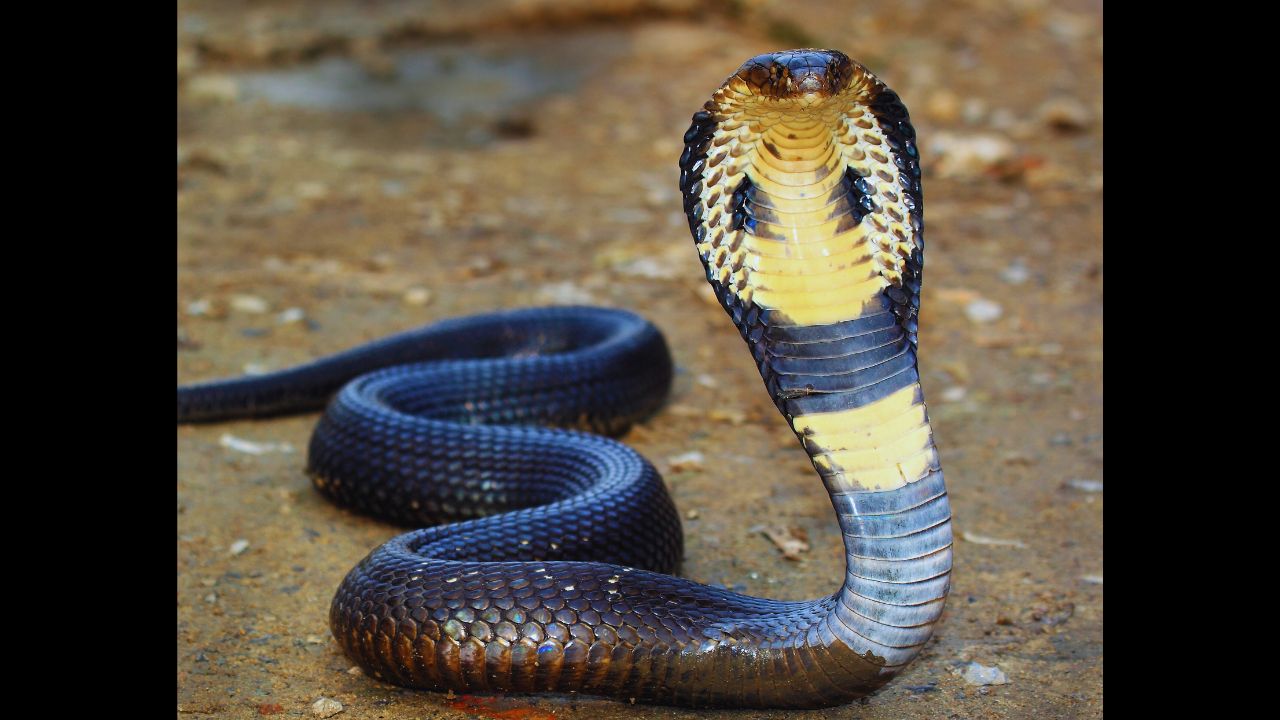Interesting Facts About Cobras
Cobras are a kind of poisonous snakes distinguished by their characteristic hoods, which they grow by stretching their skin and enlarging their ribs. One of the many amazing characteristics that make cobras a source of both curiosity and horror is their unusual defense system. Although these snakes may spew venom that can pierce through torn flesh or cause major injury to the eyes, they are normally timid and will not engage in conflict unless provoked. Cobras are important to their ecosystems, despite their reputation for being terrifying animals.
The real cobras belong to the genus Naja, which saw a major taxonomic review in 2009. As a consequence, this genus now has 38 recognized species; however, further study might find more. The Caspian and Philippine cobras are thought to be the most poisonous of them, with the ability to inject a strong dosage of neurotoxic venom.
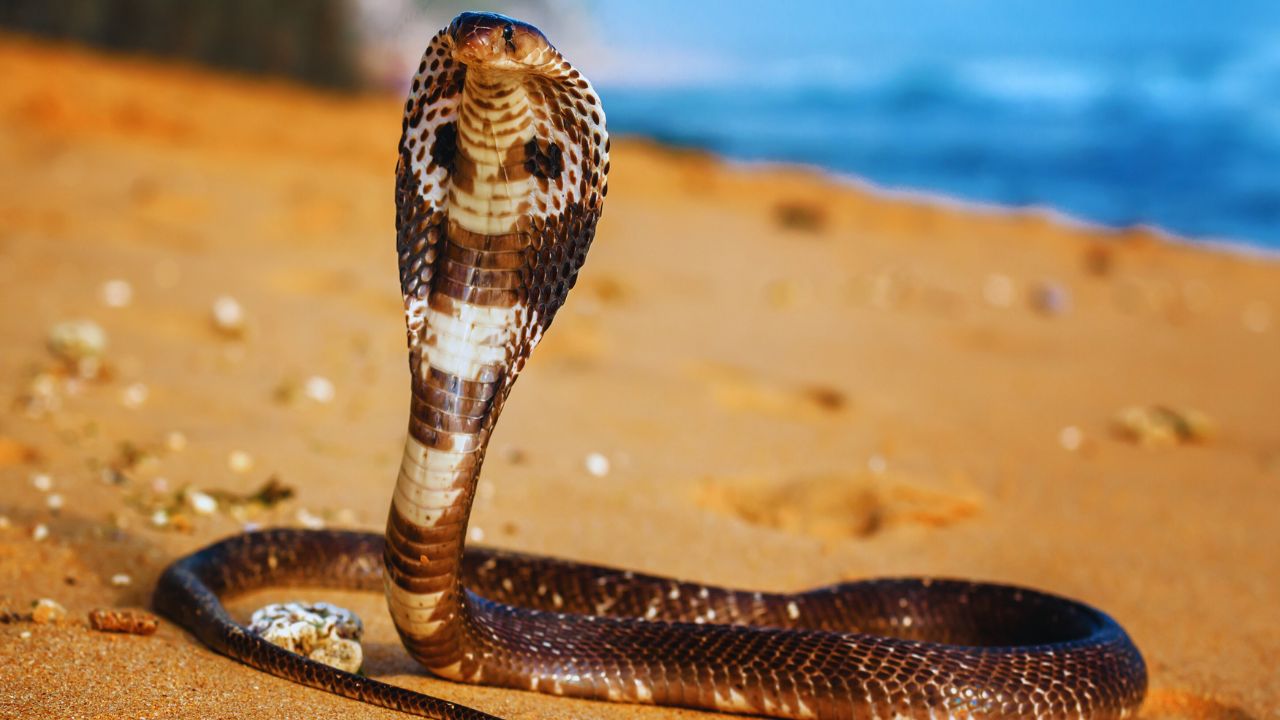
Cobra Overview
| Category | Details |
|---|---|
| Hood Mechanism | Cobras create hoods by flattening their ribs and stretching their skin. |
| Venom Characteristics | Cobras can spit venom; some venoms cause burns to eyes or broken skin. |
| Behavior | Cobras are shy and prefer to avoid confrontation. |
| Taxonomy (2009 Revision) | 38 species in the Naja genus; further research may reveal more. |
| Most Venomous Species | Caspian cobra and Philippine cobra. |
| Habitat | Rainforests, cultivated lands, deciduous forests, urban areas, temperate climates, and arid environments. |
| Diet | Primarily rodents; also amphibians, lizards, birds, eggs, and other snakes (for king cobras). |
| Reproduction | Mating in spring, egg-laying with incubation by mother in some species; rinkhals give live birth. |
| Scientific Classification | Family Elapidae, genus Naja (Sanskrit origin of the name). |
| Conservation Status | Some species are vulnerable or endangered; others have stable populations. |
| Natural Predators | Humans, mongooses, and wild boars. |
| Physical Characteristics | Length: 6–10 feet; some species up to 18 feet. Round pupils, various head shapes, and color patterns. |
| Venom Delivery | Venom expelled through fangs; some species can spit venom. |
| Types of Cobras | Includes species like Chinese Cobra, Egyptian Cobra, Philippine Cobra, and others. |
| Evolution | Venom glands evolved to stay ahead of prey resistance; spitting behavior may have evolved as a defense against larger animals, including early humans. |
| Medical Value of Venom | Used in research for blood thinners, heart medications, anticancer drugs, and anti-inflammatory treatments. |
| Human Interactions | Generally shy, prefer to flee; culturally significant in various regions; important for controlling rodent populations. |
Habits and Conduct
Cobras are adaptable animals that can live in a variety of environments. They are found in deciduous woods, agricultural regions, urban areas, and rainforests. While certain species, like the Arabian cobra, do well in dry conditions, others do well in moderate regions with broad savannahs and grasslands.
Due to their diurnal nature, these snakes are mostly active throughout the day. On the other hand, cobras adapt their hunting schedule to the cooler hours of early morning and late evening in areas where summer temperatures become excessive. Primarily, they eat rodents like rats and mice, but they also eat lizards, amphibians, birds, and bird eggs. The king cobra, which is not a real cobra but resembles one in many ways, is well-known for eating other snakes.
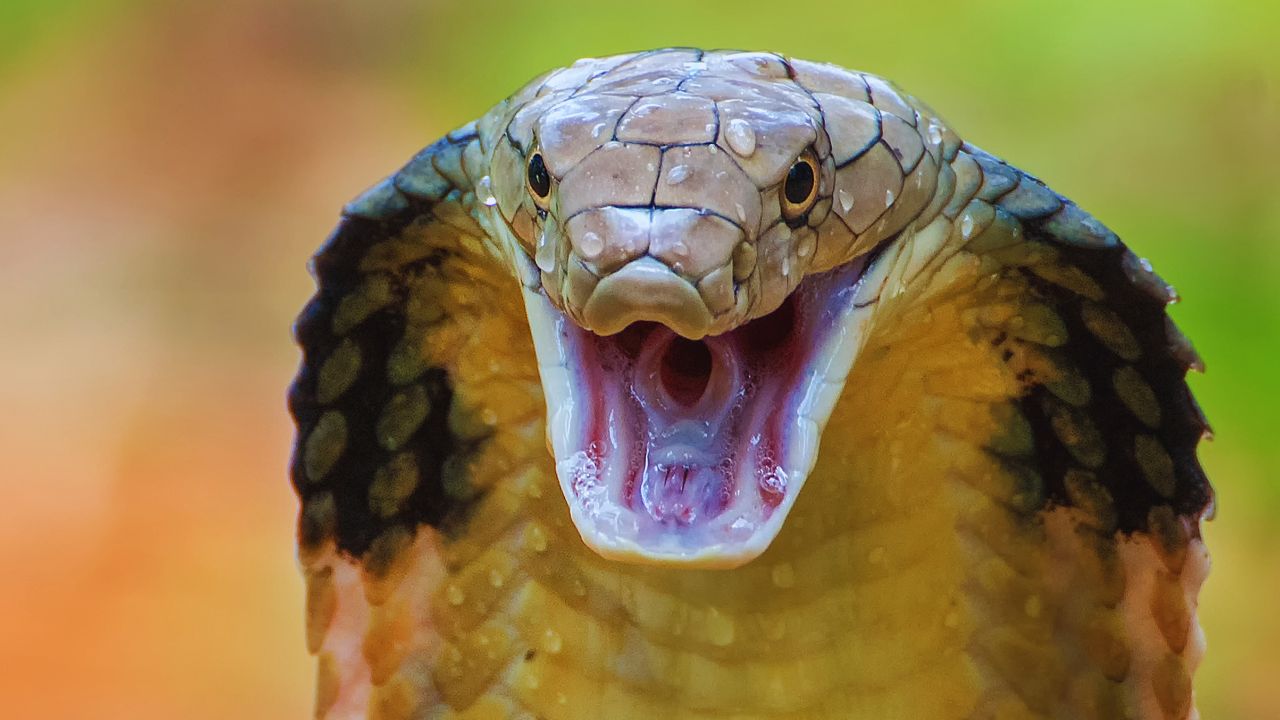
Depending on whether they are in the northern or southern hemisphere, cobras normally mate in the spring. To keep the temperature steady after mating, females bury their eggs beneath dirt and leaves. The majority of cobra species protect their eggs; however, the king cobra goes above and beyond by building a nest and remaining to see the eggs hatch. The rinkhal is an exception to this trend; instead of laying eggs, it gives birth to live young.
| Species | Region | Habitat | Diet | Reproduction | Venom Characteristics |
|---|---|---|---|---|---|
| Chinese Cobra (Naja atra) | Asia | Rainforests, cultivated lands | Rodents, amphibians, lizards, birds, eggs | Egg-laying: mother incubates eggs | Neurotoxic venom; can spit |
| Egyptian Cobra (Naja haje) | Africa | Urban areas, temperate climates | Rodents, amphibians, lizards, birds, eggs | Egg-laying: mother incubates eggs | Neurotoxic venom |
| Philippine Cobra (Naja philippinensis) | Southeast Asia | Rainforests, urban areas | Rodents, amphibians, lizards, birds, eggs | Egg-laying: mother incubates eggs | Highly venomous, neurotoxic |
| King Cobra (Ophiophagus hannah) | Southeast Asia | Forests, woodlands, and cultivated areas | Other snakes | Nest-building: mother incubates eggs | Neurotoxic venom, not a true cobra |
| Rinkhals (Hemachatus haemachatus) | South Africa, Zimbabwe | Grasslands, savannahs | Rodents, amphibians, lizards, birds, eggs | Live birth | Cytotoxic venom, not a true cobra |
Classification of Science
Cobras are members of the extremely poisonous Elapidae family of snakes, which also includes coral snakes and mambas. In 2009, a number of species that were previously placed under other genera—such as the water and burrowing cobras of the subgenus Boulengerina—were added to the genus Naja. The Sanskrit word nāga, which means “snake” or “hairless,” is the source of the name Naja.
“Cobra de capello,” which means “hooded serpent” in Portuguese, is the longer form of the popular word “cobra.” Portuguese explorers who came upon these snakes while traveling gave them their name. Because of the lengthy history of human involvement with these intriguing reptiles, the name “cobra” itself has Latin origins.
Preservation and Demographic Situation
The population status of several species of cobras is tracked by the International Union for Conservation of Nature (IUCN). A number of the 38 known species are classified as vulnerable, near threatened, or endangered because of reasons including habitat loss, persecution by humans, and other issues. Many cobra populations do, however, continue to be stable, especially in isolated or protected places with little to no human disturbance.
The main danger to cobras is people, since they have few natural predators. On the other hand, mongooses and wild boars hunt them as well. Because of their tolerance to cobra poison, mongooses in particular are known to feed primarily on these snakes. Cobras continue to be crucial to regulating rodent populations and preserving ecological balance, despite the difficulties they encounter.
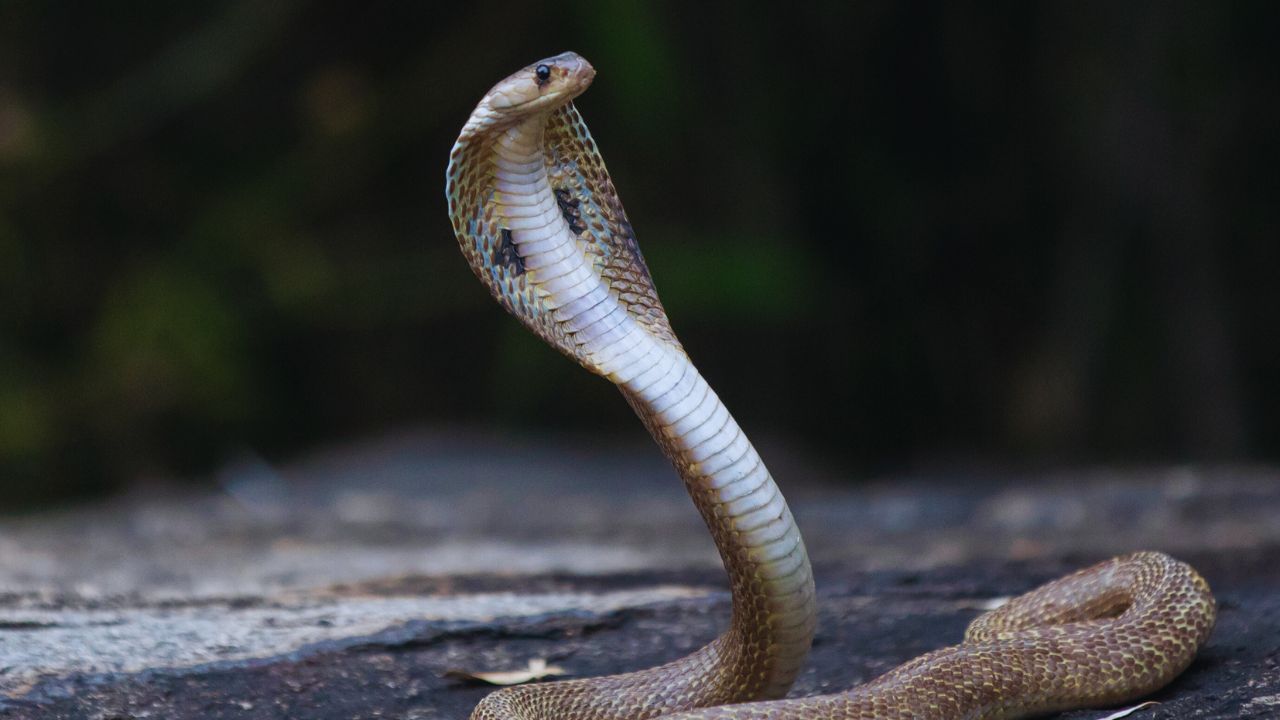
Physical attributes and delivery of venom
Cobras are long, thin snakes that usually grow to a maximum length of 10 feet, while certain species, such as the king cobra, may grow to a maximum length of eighteen feet. Depending on the species, they may have spherical pupils and a variety of head forms and color patterns.
The capacity of cobras to spew poison is one of its most stunning characteristics. They do this by using their powerful muscles to violently spit poison out of their teeth. Many cobras, in contrast to other snakes, have fangs with apertures at the front, which enables them to release venom outward as opposed to ingesting it via a bite. Except for the Indian and Caspian cobras, which can all spit venom to some extent, cobra species differ in the form of their fangs.
A cobra’s recognizable hood acts as a defense strategy, giving the snake the appearance of being bigger and more menacing to would-be predators. Because it increases their range of view, cobras often forage with their heads lifted above the ground. Many cobras hiss and snarl when they feel threatened, although they would usually rather flee than fight.
Physical Characteristics of Cobras
Cobra varieties
Africa, Asia, the Middle East, and Indonesia are home to cobras. Although they differ in size, color, and personality, they all have the same hood. Among the notable species are:
- Chinese Cobra (Naja atra)
- Egyptian Cobra (Naja haje)
- Equatorial Spitting Cobra (Naja sumatrana)
- Forest Cobra (Naja melanoleuca)
- Indian Cobra (Naja Naka)
- Monocled Cobra (Naja kaouthia)
- Philippine Cobra (Naja philippinensis)
- Red-spitting cobra (Naja pallida)
- Snouted Cobra (Naja annulifera)
- Yellow Cobra (Naja nivea)
- Zebra Spitting Cobra (Naja nigricincta)
Other snake species that resemble cobras but are in other genera exist in addition to these “true” cobras. For instance, although formerly being included in the Naja genus, the king cobra (Ophiophagus hannah) is now regarded as a separate species because of morphological and genetic variations. The food of the king cobra is very well known, since it mostly consists of other snakes.
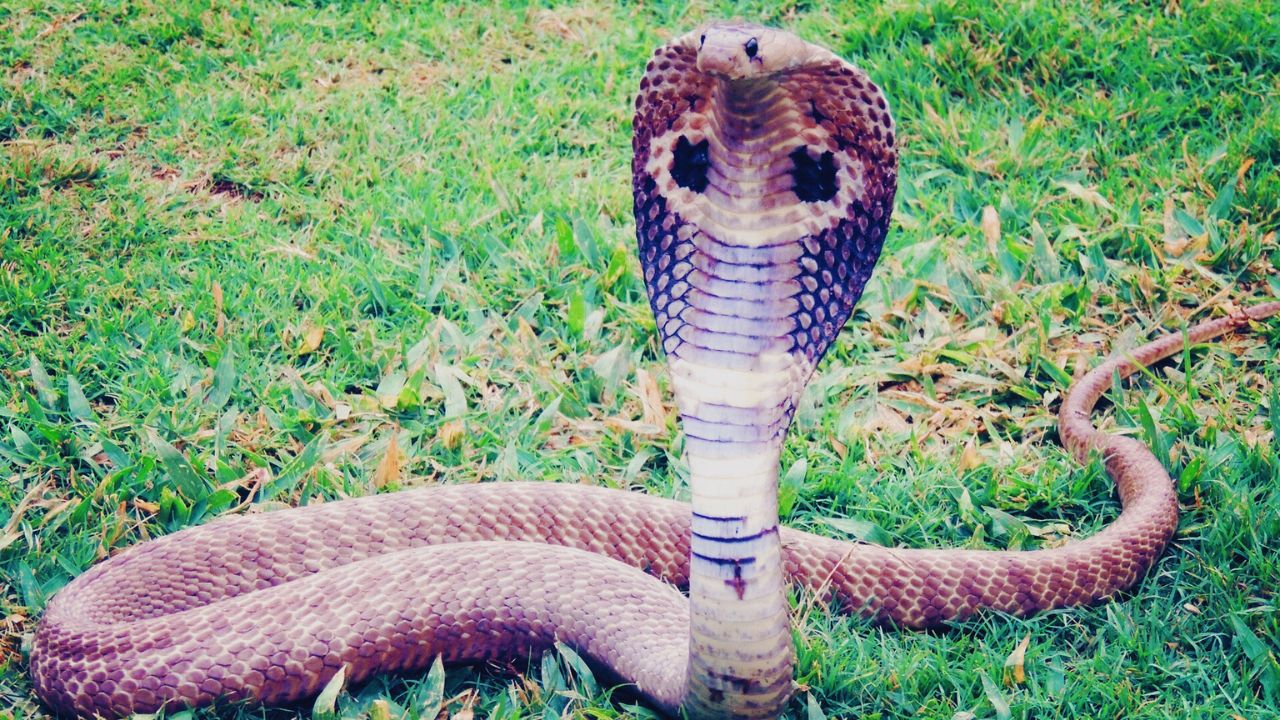
The ring-necked spitting cobra, or rinkhal (Hemachatus haemachatus), is another example. The rinkhal is just as lethal as a genuine cobra, despite having many morphological similarities. This species can only be found in Zimbabwe and South Africa, and it may be identified by its keeled scales.
Evolutionary Changes and the Past
Scientists have long been captivated by the composition and evolutionary history of cobra venom. By repurposing proteins that were formerly used in other sections of the snake’s anatomy for non-toxic purposes, cobra venom glands have evolved to create strong poisons. Because of this adaptation, cobras have been able to retain their dominant predator status despite the progressive venom resistance of their target species.
According to studies on the development of cobra venom spitting, this behavior may have evolved as a protection against giant predators that may threaten humans or other animals, such early human predecessors that were able to hurl items. Because of this evolutionary innovation, cobras are especially hazardous because, even in the absence of a bite, their venom may inflict serious harm.
A Lethal Weapon and Medicinal Instrument
One of the deadliest toxins in the animal world is cobra venom. Depending on the species, a cobra bite may cause varied symptoms, including death, in a matter of hours. Sleepiness, nausea, vomiting, severe stomach pain, bruising, swelling, and trouble breathing are typical symptoms. Most cobra species generate venom that is predominantly neurotoxic, meaning it affects the nervous system; however, some also produce cytotoxins, which induce blistering and tissue damage.
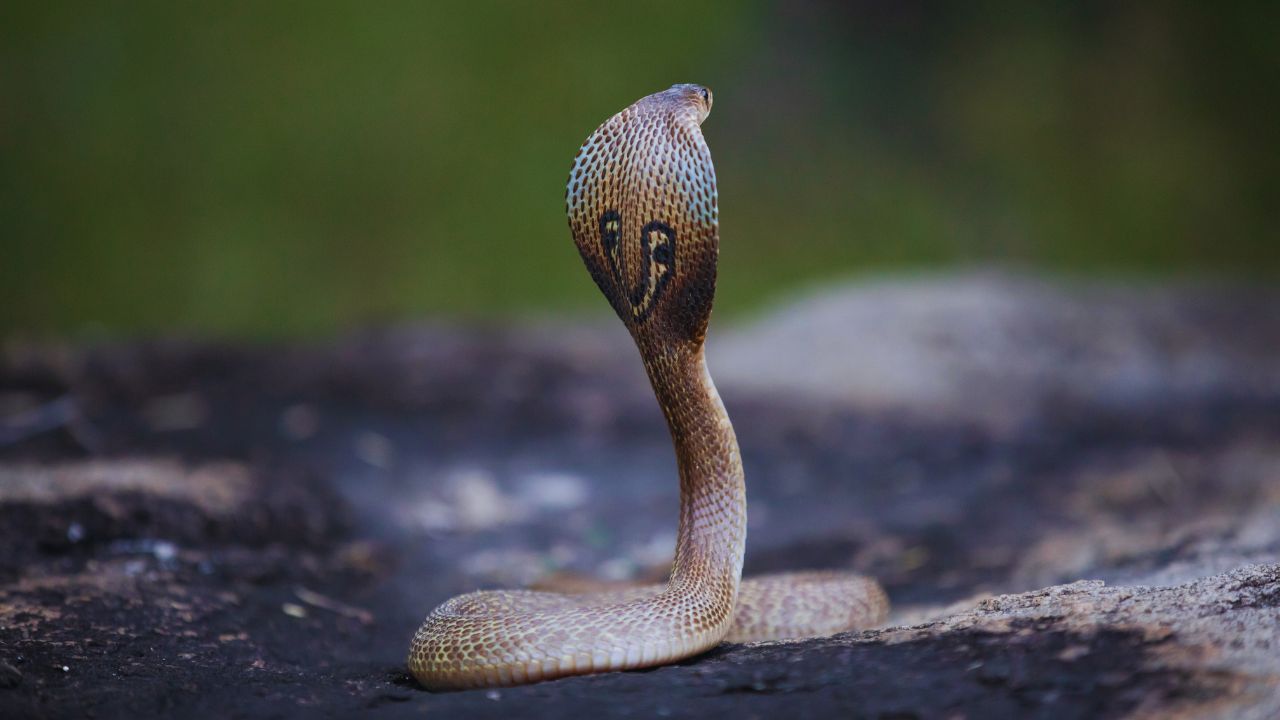
Even though cobra venom is lethal, it has important medicinal benefits. Cobra venom components have been used by researchers to create heart and blood thinners. The study of venom, or venomics, is a branch of study that is now investigating the possibility of developing novel therapies for diseases including inflammation and cancer. Thus, cobra venom is like a double-edged sword: it may be a lethal weapon in the hands of modern medicine, but it can also be a lifeline.
Human-Cobra Interactions and the Cobra’s Ecosystem Function
People frequently dread cobras because of their powerful venom and frightening hoods. But these snakes are often timid and want to stay out of trouble. Since they are not inherently hostile, when they feel threatened, they will often attempt to flee. Although these interactions are not common, many species—especially those that protect their nests—may defend themselves by standing their ground.
Cobras are admired and esteemed in many cultures, and they often appear in tales and religious iconography. Through their ability to manage rodent and other small animal populations, they also play a critical role in preserving ecological equilibrium. In the absence of cobras and other predators, the unrestrained proliferation of these prey species might result in considerable ecological damage.

Although it makes sense to be afraid of cobras, it’s crucial to appreciate their advantages and their place in the natural world. To save these amazing animals and guarantee that they survive in their native environments, conservation initiatives are crucial.





